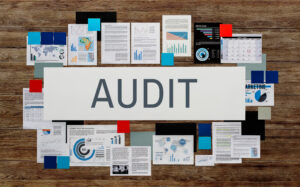ISO 9001 & ISO 22000 Lead Auditor: Roles and Responsibilities
Introduction: Lead auditors play a pivotal role in ensuring organizations comply with ISO 9001 (quality management) and ISO 22000 (food safety management). This article outlines the key responsibilities of a lead auditor and their contribution to maintaining high standards of quality and safety.
Table of Contents
- The Importance of Lead Auditors in ISO Compliance
- Key Responsibilities of an ISO Lead Auditor
- Skills and Qualifications for Lead Auditors
- Overview of the ISO Audit Process
- Common Challenges in Auditing
- How QMII Prepares Lead Auditors
- Conclusion
- FAQs on ISO Lead Auditing
The Importance of Lead Auditors in ISO Compliance
Lead auditors ensure that organizations meet the requirements of ISO 9001 and ISO 22000 by evaluating their management systems. They play a critical role in identifying non-conformities, recommending improvements, and ensuring processes align with international standards.
Key Responsibilities of an ISO Lead Auditor
ISO 9001 & ISO 22000 Lead Auditors are responsible for:
- Planning Audits: Developing an audit schedule and defining objectives and criteria.
- Conducting Audits: Assessing compliance with ISO standards through interviews, observations, and document reviews.
- Reporting Findings: Preparing detailed audit reports highlighting strengths, weaknesses, and areas for improvement.
- Providing Recommendations: Suggesting corrective actions to address non-conformities and enhance system performance.
- Training Teams: Educating staff on audit processes and compliance requirements.
Skills and Qualifications for Lead Auditors
To excel in their role, lead auditors must possess:
- Technical Knowledge: A deep understanding of ISO 9001 and ISO 22000 requirements.
- Analytical Skills: The ability to assess processes critically and identify potential risks.
- Communication Skills: Proficiency in conducting interviews, leading audit teams, and reporting findings clearly.
- Attention to Detail: Meticulousness in evaluating documents, procedures, and operational practices.
- Certification: Accredited training as an ISO 9001 & ISO 22000 Lead Auditor.
Overview of the ISO Audit Process
The lead auditor oversees the following steps during an audit:
- Preparation: Reviewing organizational policies, procedures, and previous audit reports.
- Opening Meeting: Clarifying objectives, scope, and methods with the auditee.
- Audit Execution: Collecting evidence through interviews, process observations, and documentation review.
- Closing Meeting: Presenting findings and discussing potential corrective actions.
- Follow-Up: Verifying the implementation of corrective actions during subsequent audits.
Common Challenges in Auditing
Lead auditors often face challenges such as:
- Resistance to Change: Overcoming reluctance from staff to adopt new processes.
- Lack of Documentation: Dealing with incomplete or outdated records.
- Resource Constraints: Conducting comprehensive audits within limited timeframes.
Effective planning and strong communication skills are essential to address these challenges.
How QMII Prepares Lead Auditors
QMII’s ISO 9001 & ISO 22000 Lead Auditor Training equips professionals with the knowledge and skills to excel in auditing. Our programs include hands-on exercises, case studies, and practical insights to build confidence and expertise.
Conclusion
ISO 9001 & ISO 22000 Lead Auditors play a crucial role in ensuring organizations meet quality and food safety standards. By planning and conducting audits effectively, they drive continuous improvement and compliance. For comprehensive training, explore QMII’s Training Page or contact us via our Contact Page.
FAQs on ISO Lead Auditing
- What is the role of a lead auditor? A lead auditor plans and conducts audits to assess compliance with ISO standards and recommends improvements.
- What qualifications are required for a lead auditor? Accredited training in ISO standards and strong technical, analytical, and communication skills are essential.
- How does a lead auditor handle non-conformities? By identifying issues, recommending corrective actions, and verifying their implementation in follow-up audits.
Call to Action: Start your journey to becoming a certified lead auditor with QMII’s expert training. Visit QMII today!



